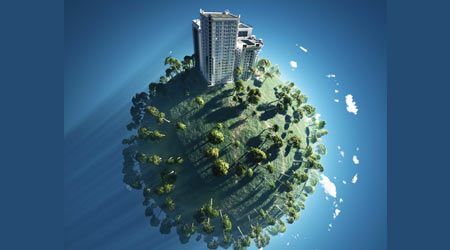Understand Energy and Water Performance Scores in LEED v4.1
The way facility managers calculate their minimum water and energy performance scores has changed in LEED v4.1. Here's what you need to know.
While there is still a minimum energy performance requirement for LEED, the way it’s calculated has changed in LEED v4.1 In the previous version of LEED for Operations and Maintenance, building teams had to achieve an Energy Star score of 75. In LEED v4.1, the minimum energy performance requirement has changed to a minimum energy performance score that is calculated based on two factors: greenhouse gas emissions and source energy. A minimum score of 40 in each area is required, based on 12 months of continuous energy monitoring. While Oaks says USGBC still strongly supports Energy Star, part of the reason for the change to this new energy performance score — guidance for which is included in the rating system itself — is to get building teams to better understand how their buildings can contribute to one of the overall goals of LEED: mitigating global climate change.
“Our emphasis with this rating system is to elevate the conversation around energy,” says Oaks. “If there is a little more complexity added, that’ll be offset by more informed project teams. They’ll be able to tackle energy use and address the larger issue of climate change.”
Water efficiency has been given added emphasis in LEED v4.1. In addition to a new water performance score prerequisite, similar to the energy performance score, water efficiency as a category also has three more points available — 15 in LEED v4.1, as opposed to 12 in LEED v4. This further weighting of water efficiency (LEED still has exactly 100 points available, and requires 40 points to achieve the Certified level) is both a response to water efficiency’s increased importance in the total picture of sustainable operations and also simply the fact that some other credits had been removed. For instance, regional priority credits are gone in LEED v4.1, and innovation credits have been reduced from six to one.
Overall, the hope for the new LEED v4.1 is that it’ll bring more existing buildings into the rating system because it’s easier to use and outcomes are easier to measure and report, says Oaks. Because of its integration with Arc, recertification is easier, as well — the data is already being collected, and therefore building teams aren’t starting from scratch at recertification time.
Email comments and questions to greg.zimmerman@tradepress.com.
Related Topics:














